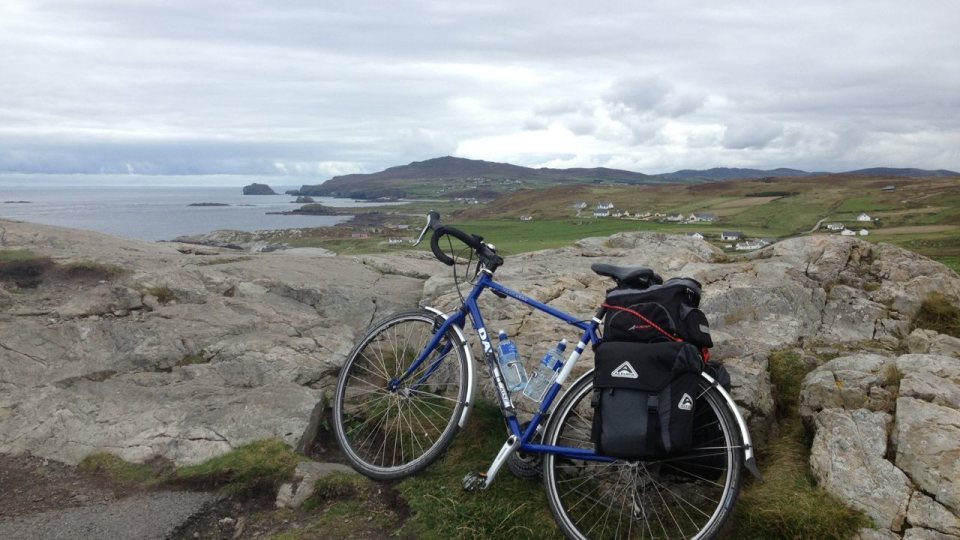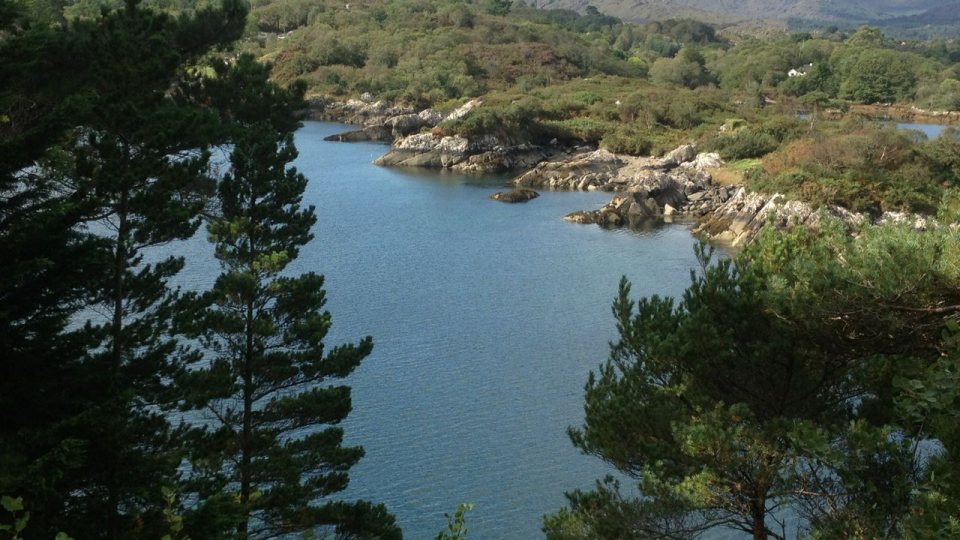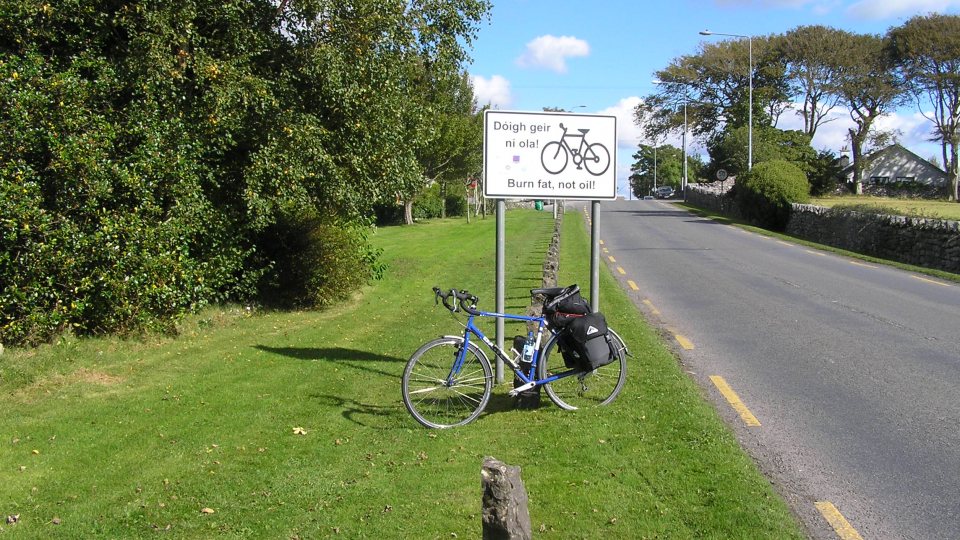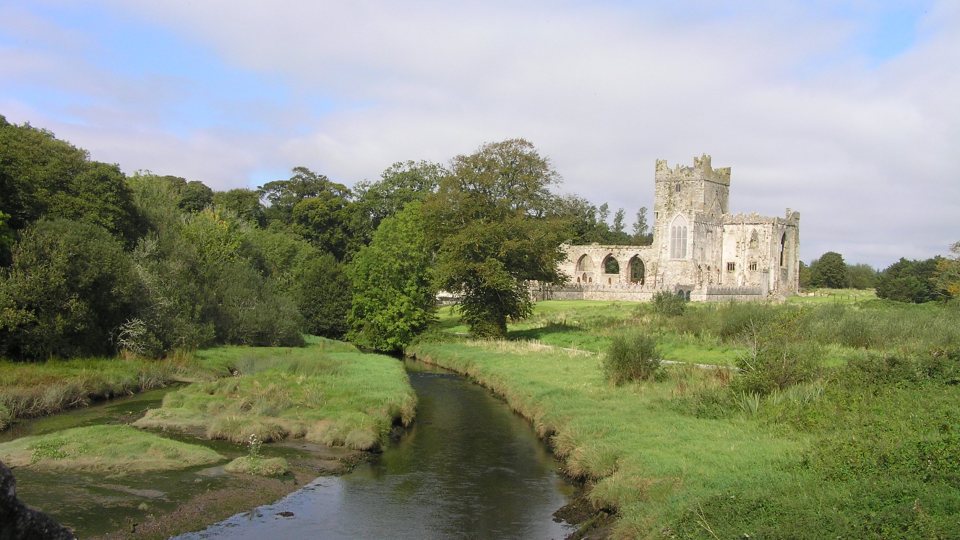Round Ireland Coastal Cycle
By Hugh Halpin
Did you ever wonder how long the coast of Ireland is? One way of measuring it is to set off on a bicycle. Of course there are easier ways but none as satisfying and there are far better reasons for doing it. Take the magnificent scenery. Ireland is a lovely little country, right up there with the best of them. The pace of cycling allows you to see its loveliness in slow motion. There are also the people. Telling someone you are cycling around Ireland is a great conversation opener, giving you opportunities to meet interesting characters. You’ll also sleep soundly and you can eat what you like as those piled on calories are shed on the road. A word of warning though, if you decide to do it alone, it helps to get on with yourself.
Now I can vouch for this as I pedaled 3,000 km of Ireland’s coast before I got back to where I started in Skerries. I left by the back door of my home and went south to return through the front door from the north. Bringing the bike through the house completed the circuit. In total I was on the road for 33 days and in the saddle for 165 hours. I went south to make use of the prevailing southerly winds to help push me up the Wild Atlantic Way. However they prevailed when it suited them. I had many a breeze trying to push me back the way I came.
I did the coastal cycle in two stages, the first in September 2012 and the second in September 2014. Why September you might ask? Well September is off-season. Accommodation is easier to get and rates are better. I used hostels and B&Bs. Though more expensive than hostels, B&Bs generally provide ensuite rooms for that much needed shower and the great Irish breakfast awaits on the table. On the other hand, you can make your own meals in hostels and save money staying in these.
Camping is another option for the budget conscious. But you mightn’t get a shower and then wonder why people avoid you. The tent also adds weight and bulk to your load. Of course you can mix all three or you may be lucky to have relatives scattered about the country to stay with. My smart phone was invaluable for accessing information about accommodation on sites like B&B Ireland and Discover Ireland. I also used it for checking the weather forecast, mapping my progress, checking ferry timetables, taking photos, texting and I even used it as a telephone! By the way it surprised me to find that B&B rates were less in 2014 than 2012.
Another reason I choose September is that the weather is often settled. In 2012 I set out on the 4th of September and cycled until the 19th before the weather broke and I came home because I don’t cycle in the rain. This year I set out on the 31st of August and managed to complete the cycle with hardly a drop of rain. The decision to travel in the first place was based on a promising five-day weather forecast. While on the road, I checked the forecast each evening. Rain was my biggest fear because, as I said, I don’t cycle in it. Headwind was another and the combination of the two h’s, hill and headwind, made for hard work and planned distances not reached.
So how did I plan my coastal route? The strategy was simple enough – I followed the coast roads although I allowed myself a bit of slack. Day-to-day cycling, however, required a bit more planning. From training, I estimated I could average about 20 km/hour and cover 80-100 km a day with my loaded panniers on board. I bought a copy of Ordinance Survey ‘The Complete Atlas of Ireland’ and tore out the required page or two to cover a days cycling. I placed them back-to-back in a plastic folder for convenience. The atlas provided distances between towns. I wrote these down and used them to estimate where I’d stop for lunch and where I’d finish on that day. This allowed me to book accommodation in advance though I usually left it till afternoon in case I wouldn’t make it. I usually cycled a page of the atlas each day, replacing it with the next day’s page. Needles to say I had a cycling computer and used an app called ‘Map my Ride’ to record my progress, two devices to be sure. Both let me down but fortunately not at the same time.
I attached two side panniers and one top pannier to the rear rack of my Dawes Galaxy touring bike. I kept the load to a minimum. In one side pannier I carried smalls for five days and a set of clothes and shoes for evening. In the other, I carried a spare set of cycling gear, wash gear, quick drying towel, a book and the road atlas. The top pannier contained spare tube, puncture repair kit, basic tools, lights, lock, rain gear and sun block. I carried no panniers on the front of the bike, leaving the handlebars free for bell, cycling computer and light fitting. My support (dear wife) met me at weekends to refresh the supplies that kept me civilized.
What were the highlights of the trip? There were many, but here are a few that come to mind. Anticipating what was around the corner or over the hill, the Wild Atlantic Way, the offer of a lift by a publican in Dingle over the Conor Pass (of course I refused), meeting up with friends, coffee, scones and view in Roundstone, the Ceide Fields, Malin Head (the quiff of Ireland), the Causeway Coast, but most of all, cycling intact into Skerries after 3,000 km and yes, it was worth it!
Help us do more for cycling in Dublin by becoming a member!




